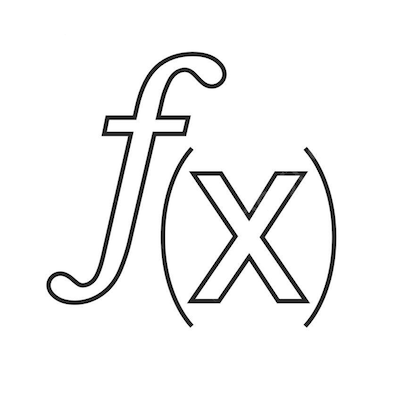🔬 Tutorial problems iota \(\iota\)#
Note
This problems are designed to help you practice the concepts covered in the lectures. Not all problems may be covered in the tutorial, those left out are for additional practice on your own.
\(\iota\).1#
The demand for a product, \(D\), depends on the price \(p\) of the product and on the price \(q\) charged by a competing producer. It is \(D(p, q) = a - bpq^{-\alpha}\), where \(a, b\) and \(\alpha\) are positive constants with \(\alpha < 1\).
Find \(D'_p(p, q)\) and \(D'_q(p, q)\), and comment on the signs of the partial derivatives.
The partial derivatives are as follows:
\(D'_p(p, q) < 0\) implies that as the price \(p\) increases, the demand \(D\) will decrease, ceteris paribus.
\(D'_q(p, q) > 0\) implies that as the competing producer’s price \(q\) increases, the demand \(D\) will increase, ceteris paribus.
\(\iota\).2#
Cobb-Douglas Preferences Specific Example:
Consider the utility function \(U(x, y)=x^{0.5} y^{0.5}\) that is defined on the consumption set \(\mathbb{R}_{+}^{2}\).
(a) Find the equation of the indifference curve that corresponds to \(U=40\).
(b) What is the slope of the indifference curve for \(U=40\) for any given value of \(x\)?
(c) What is the equation of an arbitrary indifference curve for this utility function?
(d) What is the slope of an arbitrary indifference curve for this utility function at any given value of \(x\)?
2(a)
The utility function is
The indifference curve corresponding to an amount of utility equal to 40 “utils” is given by the condition
Thus the equation of the indifference curve corresponding to an amount of utility equal to 40 “utils” is
Note that the graph of this indifference curve will be a rectangular hyperbola.
2(b)
The slope of the indifference curve corresponding to an amount of utility equal to 40 “utils” is given by
We can show that the marginal rate of substitution of \(x\) for \(y\) for this utility function is given by
(Exercise: Show this.) At first glance, it might appear that
in this case (when \(U=40\) ). Oh ye of little faith! Recall that the equation for the indifference curve corresponding to a utility level of forty “utils” was
Upon substituting this into the marginal rate of substitution expression, we obtain
so that we do indeed have
2(c)
The utility function is
The indifference curve corresponding to an arbitrary, but given, amount of utility, say \(k>0\), is given by the condition
Thus the equation of the indifference curve corresponding to a utility level of \(k>0\) is
Note that the graph of any such indifference curve (when the utility level is \(k>0\) ) will be a rectangular hyperbola.
2(d)
The slope of the indifference curve corresponding to a utility level of \(k>0\) is given by
We can show that the marginal rate of substitution of \(x\) for \(y\) for this utility function is given by
(Exercise: Show this.) At first glance, it might appear that
in this case (when \(U=k>0\) ). Oh ye of little faith! Recall that the equation for the indifference curve corresponding to a utility level of \(k>0\) was
Upon substituting this into the marginal rate of substitution expression, we obtain
so that we do indeed have
\(\iota\).3#
Marginal Rates of Substitution:
Calculate the marginal rate of substitution for an arbitrary commodity bundle of the form \((x, y)>>\) \((0,0)\) (that is, where \(x>0\) and \(y>0\) ) for each of the following utility functions.
(a) Quasi-Linear Preferences Example 1: \(U(x, y)=x+\sqrt{y}\).
(b) Quasi-Linear Preferences Example 2: \(U(x, y)=x+\ln (y)\).
(c) Stone-Geary Preferences: \(U(x, y)=\left(x-x_{0}\right)^{\alpha}\left(y-y_{0}\right)^{1-\alpha}\), where \(x_{0}>0, y_{0}>0\), and \(\alpha \in(0,1)\) are fixed parameters.
(d) Constant-Elasticity-of-Substitution (CES) Preferences: \(U(x, y)=\left(\alpha x^{\rho}+\beta y^{\rho}\right)^{\frac{1}{\rho}}\), where \(x_{0}>0, y_{0}>0\), and \(\alpha \in(0,1)\) are fixed parameters.
3(a)
The utility function is
The marginal utility of commodity \(x\) is
The marginal utility of commodity \(y\) is
The marginal rate of substitution of commodity \(x\) for commodity \(y\) is
3(b)
The utility function is
The marginal utility of commodity \(x\) is
The marginal utility of commodity \(y\) is
The marginal rate of substitution of commodity \(x\) for commodity \(y\) is
3(c)
The utility function is
The marginal utility of commodity \(x\) is
The marginal utility of commodity \(y\) is
The marginal rate of substitution of commodity \(x\) for commodity \(y\) is
3(d)
The utility function is
The marginal utility of commodity \(x\) is
The marginal utility of commodity \(y\) is
The marginal rate of substitution of commodity \(x\) for commodity \(y\) is
\(\iota\).4#
Find the degree of homogeneity, if there is one, for each of the following functions:
(a) \(f(x,y,z) = 3x+4y-3z\)
(b) \(g(x,y,z) = 3x+4y-2z-2\)
(c) \(h(x,y,z) = \frac{\sqrt{x}+\sqrt{y}+\sqrt{z}}{x+y+z}\)
(d) \(G(x,y) = \sqrt{xy} \ln \left( \frac{x^2+y^2}{xy} \right)\)
(e) \(H(x,y) = \ln x + \ln y\)
(f) \(p(x_1,\dots,x_n) = \sum_{i=1}^{n} x_i^n\)
This question comes from Sydsæter, Hammond, Strøm, and Carvajal (2016) (Section 12.7, Problem 1)
To investigate whether a function is homogenous of any degree, we can check if the condition in the definition of homogenous function is satisfied.
(a)
Hence, \(f(x,y,z)\) is homogenous of degree one
(b)
Hence, \(g(x,y,z)\) is not homogenous of any degree
(c)
Hence, \(f(x,y,z)\) is homogenous of degree \(-\frac{1}{2}\)
(d)
Hence, \(f(x,y,z)\) is homogenous of degree one
(e)
Hence, \(H(x,y)\) is not homogenous of any degree
(f)
Hence, \(f(x,y,z)\) is homogenous of degree \(n\)
\(\iota\).5#
According to a study of industrial fishing, the annual herring catch is given by the production function \(Y(K, S) = 0.06157 K^{1.356} S^{0.562}\) involving the catching effort \(K\) and the herring stock \(S\).
(a) Find \(\frac{\partial Y}{\partial K}\) and \(\frac{\partial Y}{\partial S}\).
(b) If K and S are both doubled, what happens to the catch?
(a)
(b)
In other words, the size of the catch increases by a factor of \((2)^{1.356 + 0.562} \approx 3.779\) when both inputs are scaled by a factor of two.
